From the Community of Manufacturing, Design and Contracting Teams of U.S. Power Center, LLC

ACTION-ORIENTED PEARLS OF WISDOM FOR INDUSTRIAL MANAGERS AND CONTRACTORS
www.uspowercenter.com • 1963 Park Avenue • Twin Lake, Michigan 49457 • [email protected]
Electricity Cost per Sq Ft. by Industry Sector
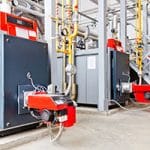
Modern boilers are more efficient, converting fuel into heat energy with higher precision, thereby cutting fuel expenses by maximizing heat output from the energy input. And natural gas boilers tend to be more efficient than oil-fired ones due to cleaner combustion processes, plus the buyer has the additional benefit of natural gas being generally less expensive than electricity.
Did You Know ..?
U.S. Power Center offers buying group pricing. Commitments on behalf of the group are made once per quarter, and the more participants involved, the greater the equipment savings are. Let us know with a phone call to get in..
Boiler Efficiency
Boilers
Control Systems
Convection Section Walls
Efficiency Improvement Equipment
Stack Gas
Capacity Control Systems
Fan Performance
Process Compressors
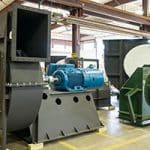
Modern centrifugal fans are designed for high airflow rates and increased pressure, handling large volumes of air, making them suitable for various applications. Upgrading to energy-efficient electronically commutated fans reduces energy usage, as they eliminate drive losses by connecting the motor directly to the impeller, resulting in significant cost savings.
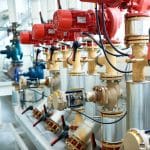
Reduce energy consumption by reducing the pressure and flow with smaller impellers. Add VFDs, as they alter the rotational speed of the motor per the application’s requirements. The head and flow sync with demand, reducing consumption by slowing down the motor speed.
Capacity Control Systems
Pump Performance
Air Compressor Types
Air Leaks
Air Receivers
Compressed Air Efficiency
Heat Recovery
Lubricants
Operating Modes
Piping
Power Draw
Staging Sequence
Storage Tanks
System Pressure
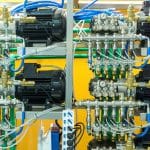
Rotary screw air compressors' popularity is due to their ability to run non-stop around the clock. As long as a screw-type air compressor is sized correctly, its efficiency is superior to other air compressors on the market. While oil-injected compressors require more routine maintenance, they’ll typically have a lower total cost of ownership as compared to an oil-free screw compressor.
Did You Know ..?
Rebates are available from your local company to incentivize the use of energy efficient power systems by covering portions of the cost of the project. We’ll apply for and administer those for you.
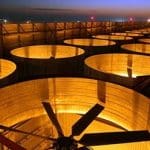
Cooling towers can lose efficiency as components begin to wear and performance decreases. Examples can be worn fan blades, deteriorated drift eliminators or plugged fill media. That combined with increased demand put on the tower by new process equipment can drive the cold water temperature well above the original design. Thermal upgrades on cooling towers can consist of larger mechanical equipment, better distribution systems and/or more efficient heat transfer media.
Did You Know ..?
We negotiate with cutting-edge technology providers on behalf of our member companies, for power systems at significantly enhanced pricing. It's the classic result of when people pool individual demand to consolidate purchasing power, using the collective influence of aggressive midsized or smaller facilities currently being ignored.
Bleed
Condenser Water Reset
Cooling Tower Fill
Fans
Flow Patterns
Thermal Storage
Tower Water
Water Flow Rates
Load
Motor Selection
Sawduct Collection Systems
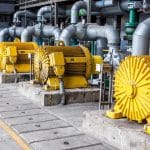
Today’s motors are energy efficient, with features like enhanced motor winding designs, optimized control algorithms, and energy recovery systems, all resulting in significant energy savings. And newer motors frequently include improved control algorithms and higher-resolution feedback devices, allowing for even finer precision control over older types, leading to tighter tolerances and higher product quality.
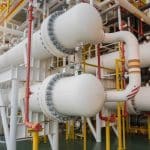
Upgraded heat exchangers make a difference in terms of efficiency, with power and torque gains the most notable benefit. The cooler and denser air provided to the combustion chamber as a result of upgraded exchangers allows for better combustion, which can lead to an increase of as much as 25 horsepower and 15 lb-ft of torque. Heat soak is also improved, which is when the engine’s intake air temperatures reach a high level, decreasing the performance of the engine.
Did You Know ..?
We partner with the U.S. Dept. of Energy, providing funding for innovative technologies and deployment into manufacturing - just for firms with less than $100m in annual sales. We apply for, pull in, and administer those on your behalf.
Bundle Replacement
Combustion Gas Temperature
Extended Surfaces
Heat Recovery Equipment
Inserts
Instrumentation & Control
Measuring Heat Recovery Opportunities
Surface Treatment
Turbine-driven Feedwater Pumps
Automation & Control
Closed-loop Heat Pumps
Damper Economizer Control
Heat Pipes
Heat Recovery
Infrared Radiant Heaters
Latent & Sensible Heat
Operating Time Management
Sensors
Set Points
Supply Air Temperature Control
Thermal Storage
Variable Air Volume System (VAV)
Variable Frequency Drives
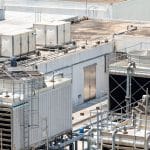
Heating, Ventilation and Air Conditioning can consume as much as half of an industrial building’s annual energy, and system inefficiencies can cause thousands of dollars per year in unnecessary expense. Newer HVAC systems operate at an increased performance level, and upgraded systems typically distribute air more evenly. Balanced air results in fewer hot and cold patches. In addition, today’s advanced controls create significant value for industry, enabling a comprehensive approach across people, processes, and a variety of technologies.
Did You Know ..?
The company submits applications for federal Rural Energy Grants, leveraging your industrial power equipment. If you’re in a rural town, we’ll develop your application, and take it through the process..
How About This ..?
Are you aware of 0% 3rd party shared savings programs? Become a member of our buying group, receive funding easily for your project, and pay it back over time out of the savings generated. Become a member.
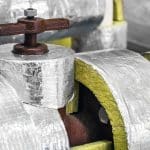
Whether it be manufacturing, food processing, power generation, or the stabilization and control of temperatures, thermal insulation solutions play a critical role in the today’s industrial space. Pipes, tanks and vessels, ovens and kilns, chimneys, ductwork, and boilers are just a few examples of ways in which energy consumption can be reduced through the use of insulation.
Body Heat
Conduction
Heat Loss & Heat Gain
Infiltration & Exfiltration
Insulation Economics
Insulation Types
Computer Equipment
Control Strategies
Imaging Equipment
Lighting Fixtures
Plug Loads
Server Rooms
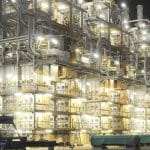
LED lighting offers a positive return on investment that is significant, as it’s not uncommon at all for a retrofit to realize a simple payback of less than two years. Occupant well-being is enhanced given the better-quality illumination, and when people are well they’re productive. Additional efficiency can be garnered with controls that coordinate not only the lighting system, but plug loads as well.
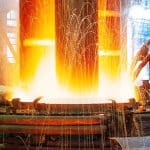
Commonly used to process hydrocarbon feeds, and they often also include convection banks that produce steam. Consider increasing furnace capacity by unit, with fewer furnaces for maximum efficiency. Strategies should involve the use of refractory and insulation to minimize heat loss, limiting air infiltration to the furnace and/or maintaining good control of excess oxygen.
Burners
Convection Section Walls
Instrumentation
Radiant Coils
Radiant Section Walls
Stack Gases
Automation Packages
Equipment
Operations
Systems
Types
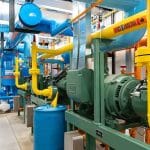
Replacing large, central-chiller-plant equipment is generally a a question of cost, risk, reliability, and anticipated energy savings. But new machines offer features beyond energy savings that include VFDs for better part-load operation and more stable water temperatures, easier operator interface and controls. And the chillers can have smaller footprints, freeing up floor space.
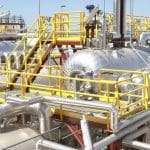
Steam systems account for about 30% of the total energy used in industrial applications for product output. These systems can be indispensable in delivering the energy needed for process heating, pressure control, mechanical drives, separation of components, and production of hot water for process reactions. Repairing steam leaks, minimizing vented steam, ensuring that piping, valves, fittings, and vessels are well insulated, and ensuring that steam traps are well-maintained all can increase energy efficiency in your plant.
Did You Know ..?
Significant tax deductions exist for installing energy-efficient systems in industrial buildings, and these can be claimed by building owners or tenants who make these improvements to their operations. We assist members with this deduction.
How About This ..?
We’re a performance contractor. A performance contract is an agreement between a building owner / tenant and a contractor. We’ll design and install your power system, guaranteeing its performance.
Applications
Condensate Heat Recovery
Deaerator Steam
Hot Water Distribution
Radiant Section Walls
Instrumentation & Control
Insulation
Venting
Waste Heat Recovery
Cold Trap Diagnosis
Steam Trap Types
Steam Leaks
Steam Trap Diagnostics
Steam Trap Sizing
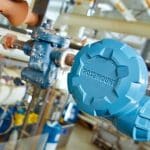
Steam traps fail through either the leakage of steam, or drainage, in which the flow of condensate is blocked, preventing the removal or draining of condensate from the system. Failure rates can be high, and if left unattended a population of steam traps can easily have between 20 and 40% in a failed condition.
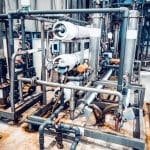
Whether you need to upgrade distribution mains, treatment systems, wells, pumps and controls, replace lead service lines or increase elevated or ground storage capacity, we assist Facilities Managers through every stage of the process.
Call Us.
In short, we enhance your system’s capabilities
and the integration of subsystem elements to make
all of it work more efficiently, utilizing fewer resources.
Water Flow
Chilled Water & Condenser Systems
Constant Volume Pumps
Pressure Drop
System Balance

Modern boilers are more efficient, converting fuel into heat energy with higher precision, thereby cutting fuel expenses by maximizing heat output from the energy input. And natural gas boilers tend to be more efficient than oil-fired ones due to cleaner combustion processes, plus the buyer has the additional benefit of natural gas being generally less expensive than electricity.
Boiler Efficiency
Boilers
Control Systems
Convection Section Walls
Efficiency Improvement Equipment
Stack Gas
Did You Know ..?

U.S. Power Center offers buying group pricing. Commitments on behalf of the group are made once per quarter, and the more participants involved, the greater the equipment savings are. Let us know with a phone call to get in ..

Modern centrifugal fans are designed for high airflow rates and increased pressure, handling large volumes of air, making them suitable for various applications. Upgrading to energy-efficient electronically commutated fans reduces energy usage, as they eliminate drive losses by connecting the motor directly to the impeller, resulting in significant cost savings.
Capacity Control Systems
Fan Performance
Process Compressors

Reduce energy consumption by reducing the pressure and flow with smaller impellers. Add VFDs, as they alter the rotational speed of the motor per the application’s requirements. The head and flow sync with demand, reducing consumption by slowing down the motor speed.
Capacity Control Systems
Pump Performance

Rotary screw air compressors' popularity is due to their ability to run non-stop around the clock. As long as a screw-type air compressor is sized correctly, its efficiency is superior to other air compressors on the market. While oil-injected compressors require more routine maintenance, they’ll typically have a lower total cost of ownership as compared to an oil-free screw compressor.
Air Compressor Types
Air Leaks
Air Receivers
Compressed Air Efficiency
Heat Recovery
Lubricants
Operating Modes
Piping
Power Draw
Staging Sequence
Storage Tanks
System Pressure
Did You Know ..?

Rebates are available from your local company to incentivize the use of energy efficient power systems by covering portions of the cost of the project. We’ll apply for and administer those for you.

Cooling towers can lose efficiency as components begin to wear and performance decreases. Examples can be worn fan blades, deteriorated drift eliminators or plugged fill media. That combined with increased demand put on the tower by new process equipment can drive the cold water temperature well above the original design. Thermal upgrades on cooling towers can consist of larger mechanical equipment, better distribution systems and/or more efficient heat transfer media.
Bleed
Condenser Water Reset
Cooling Tower Fill
Flow Patterns
Thermal Storage
Tower Water
Water Flow Rates
Did You Know ..?

We negotiate with cutting-edge technology providers on behalf of our member companies, for power systems at significantly enhanced pricing. It's the classic result of when people pool individual demand to consolidate purchasing power, using the collective influence of aggressive midsized or smaller facilities currently being ignored.

Today’s motors are energy efficient, with features like enhanced motor winding designs, optimized control algorithms, and energy recovery systems, all resulting in significant energy savings. And newer motors frequently include improved control algorithms and higher-resolution feedback devices, allowing for even finer precision control over older types, leading to tighter tolerances and higher product quality.
Load
Motor Selection
Sawduct Collection Systems

Upgraded heat exchangers make a difference in terms of efficiency, with power and torque gains the most notable benefit. The cooler and denser air provided to the combustion chamber as a result of upgraded exchangers allows for better combustion, which can lead to an increase of as much as 25 horsepower and 15 lb-ft of torque. Heat soak is also improved, which is when the engine’s intake air temperatures reach a high level, decreasing the performance of the engine.
Bundle Replacement
Combustion Gas Temperature
Extended Surfaces
Heat Recovery Equipment
Inserts
Instrumentation & Control
Measuring Heat Recovery Opportunities
Surface Treatment
Turbine-driven Feedwater Pumps
Did You Know ..?

We partner with the U.S. Dept. of Energy, providing funding for innovative technologies and deployment into manufacturing - just for firms with less than $100m in annual sales. We apply for, pull in, and administer those on your behalf.

Heating, Ventilation and Air Conditioning can consume as much as half of an industrial building’s annual energy, and system inefficiencies can cause thousands of dollars per year in unnecessary expense. Newer HVAC systems operate at an increased performance level, and upgraded systems typically distribute air more evenly. Balanced air results in fewer hot and cold patches. In addition, today’s advanced controls create significant value for industry, enabling a comprehensive approach across people, processes, and a variety of technologies.
Automation & Control
Closed-loop Heat Pumps
Damper Economizer Control
Heat Pipes
Heat Recovery
Infrared Radiant Heaters
Latent & Sensible Heat
Operating Time Management
Sensors
Set Points
Supply Air Temperature Control
Thermal Storage
Variable Air Volume System (VAV)
Variable Frequency Drives
Did You Know ..?

The company submits applications for federal Rural Energy Grants, leveraging your industrial power equipment. If you’re in a rural town, we’ll develop your application, and take it through the process.

Whether it be manufacturing, food processing, power generation, or the stabilization and control of temperatures, thermal insulation solutions play a critical role in the today’s industrial space. Pipes, tanks and vessels, ovens and kilns, chimneys, ductwork, and boilers are just a few examples of ways in which energy consumption can be reduced through the use of insulation.
Body Heat
Conduction
Heat Loss & Heat Gain
Infiltration & Exfiltration
Insulation Economics
Insulation Types

LED lighting offers a positive return on investment that is significant, as it’s not uncommon at all for a retrofit to realize a simple payback of less than two years. Occupant well-being is enhanced given the better-quality illumination, and when people are well they’re productive. Additional efficiency can be garnered with controls that coordinate not only the lighting system, but plug loads as well.
Computer Equipment
Control Strategies
Imaging Equipment
Lighting Fixtures
Plug Loads
Server Rooms

Commonly used to process hydrocarbon feeds, and they often also include convection banks that produce steam. Consider increasing furnace capacity by unit, with fewer furnaces for maximum efficiency. Strategies should involve the use of refractory and insulation to minimize heat loss, limiting air infiltration to the furnace and/or maintaining good control of excess oxygen.
Burners
Convection Section Walls
Instrumentation
Radiant Coils
Radiant Section Walls
Stack Gases
Refrigeration & Chillers

Replacing large, central-chiller-plant equipment is generally a a question of cost, risk, reliability, and anticipated energy savings. But new machines offer features beyond energy savings that include VFDs for better part-load operation and more stable water temperatures, easier operator interface and controls. And the chillers can have smaller footprints, freeing up floor space.
Automation Packages
Equipment
Operations
Systems
Types

Steam systems account for about 30% of the total energy used in industrial applications for product output. These systems can be indispensable in delivering the energy needed for process heating, pressure control, mechanical drives, separation of components, and production of hot water for process reactions. Repairing steam leaks, minimizing vented steam, ensuring that piping, valves, fittings, and vessels are well insulated, and ensuring that steam traps are well-maintained all can increase energy efficiency in your plant.
Applications
Condensate Heat Recovery
Deaerator Steam
Hot Water Distribution
Radiant Section Walls
Instrumentation & Control
Insulation
Venting
Waste Heat Recovery
Did You Know ..?

Significant tax deductions exist for installing energy-efficient systems in industrial buildings, and these can be claimed by building owners or tenants who make these improvements to their operations. We assist members with this deduction.

Steam traps fail through either the leakage of steam, or drainage, in which the flow of condensate is blocked, preventing the removal or draining of condensate from the system. Failure rates can be high, and if left unattended a population of steam traps can easily have between 20 and 40% in a failed condition.
Cold Trap Diagnosis
Steam Trap Types
Steam Leaks
Steam Trap Diagnostics
Steam Trap Sizing

Whether you need to upgrade distribution mains, treatment systems, wells, pumps and controls, replace lead service lines or increase elevated or ground storage capacity, we assist Facilities Managers through every stage of the process.
Water Flow
Chilled Water & Condenser Systems
Constant Volume Pumps
Pressure Drop
System Balance
Call Us.
In short, we enhance your system’s capabilities
and the integration of subsystem elements to make
all of it work more efficiently, utilizing fewer resources.
U.S. Power is an industrial energy services company that specializes in the reduction of energy consumption across a broad array of manufacturing and food processing facilities located in Michigan, Ohio, Indiana, Illinois and Wisconsin. In addition, the company publishes a useful curation of power-oriented information from the marketplace, and consolidates it into this concise, twice per month letter known as The Fabulous Power Maven, distributed to Facilities Managers throughout the nation.
While the company prides itself in its diversity, it owns and operates a niche power contracting firm as well, known as U.S. Power Center, LLC. With a core business in and around industrial power equipment, our specialty is in providing, installing and optimizing a full range of state-of-the-art systems, including onsite generation.
The Maven publishes these pearls weekly, or more frequently if we feel like it, because we believe America is already great, and poised to be even greater if we commit to doing our part towards cooling the planet. Publisher Ron Motsch can be reached at (616) 570-9319.
Discover Our
Family of Brands

Our power letter, full of pearls of wisdom from years of contracting experiences, by and for Building Managers and Industrial Contractors.

A searchable database of power and controls resources we’ve either created from within, published from our subscribers, or curated from around The Internet.

Our industrial contracting firm, building, deploying, and managing a suite of the most productive and admired power performance technologies on Earth.




